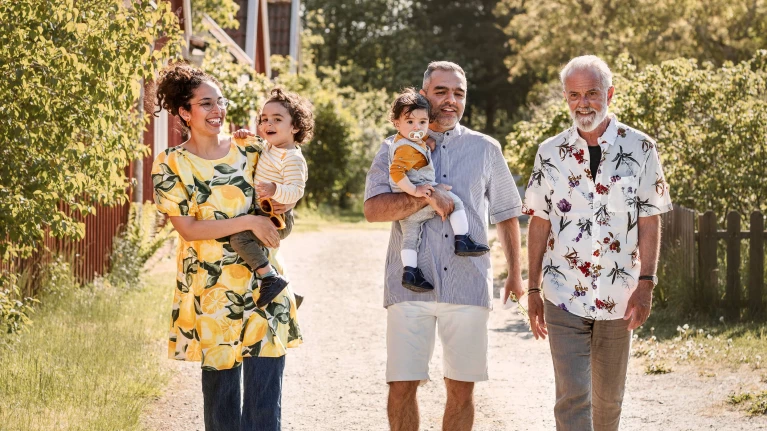When the pandemic began, I had a 1-, a 3-, and a 5-year-old and then became pregnant with my fourth child. Imagine me: three little kids, no childcare, pregnant, and working full time at BCG. My husband is a managing director at a private equity firm, so we both have big jobs. It was chaos.

There were so many times I thought: I have built a career for over 15 years. It’s something I love. It’s something I’m good at. It’s something that I care tremendously about, and I’m going to lose it because I can’t find childcare. Not because I can’t do the job. Not because I don’t want to do it anymore, but because I literally can’t find childcare to go to work. I started to think about the bigger problem—and how so many caregivers are set up to fail.
The world does not talk about the care economy or care infrastructure and its relationship to economic productivity. We don’t connect the dots. We talk about it as a women’s issue, as a DEI issue, or even as a moral issue, but we really don’t talk about it as the foundation that our economy rests on.
I wanted to spend time on this topic—which had nothing to do with the career that I had been building in consumer insights and marketing, but everything to do with the care economy. I started looking for opportunities outside BCG to build solutions, invest in the space, and make a difference.
As I returned from my fourth maternity leave, a mentor invited me to a reception BCG was hosting for one of our most distinguished alumni and former CEO of PepsiCo, Indra Nooyi, for the release of her book My Life in Full: Work, Family, and Our Future, which talks a lot about the intersection of care and her career.
Sharon Marcil, BCG’s North American chair, agreed to sponsor me to work with Indra and several colleagues to develop a BCG point of view on the outlook for the care economy. So I stayed.
We tied together economic analysis and consumer research and started to quantify what will happen if we don’t improve the care infrastructure in the United States. How many people are likely to leave their jobs? What’s going to change after the upcoming demographic shifts that we expect to see in the population in relation to not only childcare but also eldercare and the aging population?
We’re predicting that we’re not going to be able to fill all the caregiver jobs necessary to meet demand due to a significant shortage of care workers. And if there’s no paid care economy to meet that demand, the unpaid care economy will step in, which is you and me and everyone who has parents and everyone who has children. You can choose to have children, but you can’t choose to have parents, right? We’re all going to be faced with this shortage increasing over the next decade. Are we going to be able to meet the demand?
If we can’t, how many people—especially women—are we going to lose from the workforce and what will be the economic cost of that? Our research shows that the economic costs could be $290 billion a year, every year, starting in 2030.
Addressing the fault lines in the care economy isn’t just good business—it’s necessary business. It is something CEOs should worry about.
In April 2023, when the White House released its Executive Order on Increasing Access to High-Quality Care and Supporting Caregivers, our BCG research was cited as a critical proof point. One year later, our work is having a tangible impact on policy.
We’ve been working with companies to get more proof points. We’re starting with the ROI of investing in childcare benefits, but the framework we’re developing could apply to eldercare benefits as well. Most companies haven’t even begun to anticipate how providing eldercare benefits will also become necessary, so most benefit programs only consider childcare (when care benefits exist at all).
It takes more than benefits for caregivers to thrive in the workforce. Right now is actually the first time in almost a decade I don’t have a leave coming up. When I started having my four kids, I would come back from a maternity leave and it would be just a year and a half, maybe two years, before I’d go out again.
That’s disruptive. It disrupts the people who are working for you. It disrupts the people you’re working with, and it disrupts the client relationships that you’re in. Having good benefits is necessary, but it isn’t enough to overcome those disruptions; it takes a culture of support and the commitment, generosity, and patience of the people around you. BCG let me go slow when I needed to, so I could go fast later.
Two years ago, I decided to make a difference for caregivers. BCG gave me a platform, and the impact we’ve had is a real testament to what you can do when you focus BCG talent and time on issues that matter.












